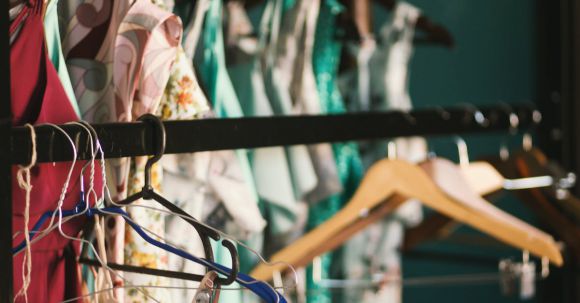When it comes to fashion, one of the most powerful tools at your disposal is color coordination. The way you combine different hues can make or break your outfit. The right color combination can enhance your features and make you stand out from the crowd. On the other hand, a poor choice of colors can leave you looking dull and unremarkable. So, how can you create eye-catching outfits with color coordination?
First and foremost, it’s essential to understand the color wheel. This simple tool can help you identify which colors work well together and which ones clash. The color wheel consists of primary colors (red, blue, and yellow), secondary colors (green, orange, and purple), and tertiary colors (a combination of primary and secondary colors). By familiarizing yourself with this wheel, you can easily determine complementary, analogous, or monochromatic color schemes.
Complementary colors are those that are opposite each other on the color wheel. When combined, they create a striking contrast that catches the eye. For example, pairing a rich red top with a deep green skirt can create a bold and attention-grabbing look. Similarly, a vibrant yellow dress can be complemented by a touch of purple accessories.
Analogous colors, on the other hand, are those that are adjacent to each other on the color wheel. This color scheme creates a harmonious and cohesive look. For instance, combining shades of blue and green can create a serene and tranquil outfit. Mixing different tones of pink and purple can result in a feminine and romantic ensemble.
If you prefer a more subtle and understated look, monochromatic color coordination is the way to go. This scheme involves using different shades and tints of a single color. For example, pairing a light blue blouse with navy blue pants and accessorizing with a baby blue scarf can create a sophisticated and elegant outfit. Monochromatic outfits are timeless and can be easily dressed up or down depending on the occasion.
When experimenting with color coordination, it’s essential to consider your skin tone and hair color. Certain colors can enhance your natural features, while others can wash you out. For example, individuals with warm undertones (yellow or golden) in their skin should opt for earthy tones like browns, oranges, and yellows. On the other hand, individuals with cool undertones (pink or blue) in their skin should lean towards jewel tones like emerald green, sapphire blue, and ruby red.
Accessories can also play a vital role in color coordination. A carefully chosen belt, scarf, or statement necklace can tie your outfit together and elevate your look. When selecting accessories, consider the overall color scheme and choose pieces that complement it. For example, a silver necklace can add a touch of elegance to a monochromatic black outfit, while a bold red belt can add a pop of color to a neutral ensemble.
In conclusion, color coordination is a powerful tool that can transform your outfits from ordinary to extraordinary. By understanding the color wheel and experimenting with different combinations, you can create eye-catching ensembles that reflect your personal style. Remember to consider your skin tone and hair color when selecting colors, and don’t be afraid to incorporate accessories to enhance your overall look. With a little practice and creativity, you can become a master of color coordination and turn heads wherever you go.





